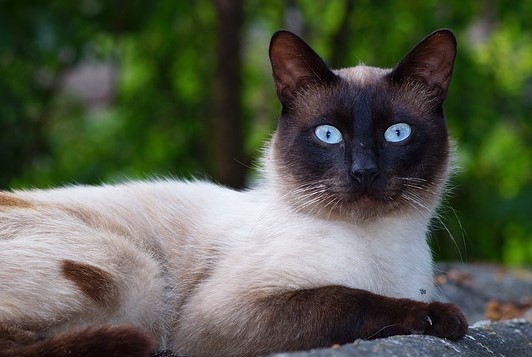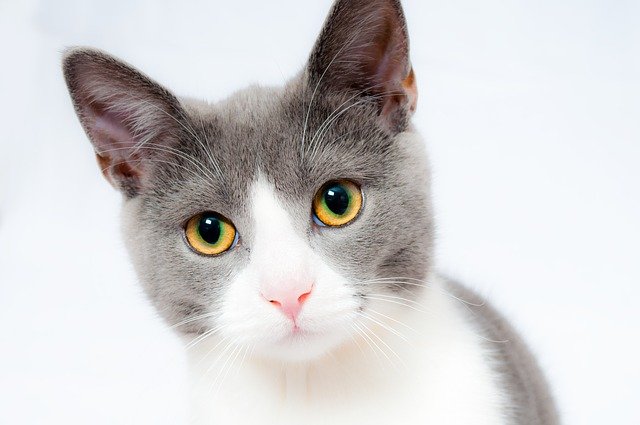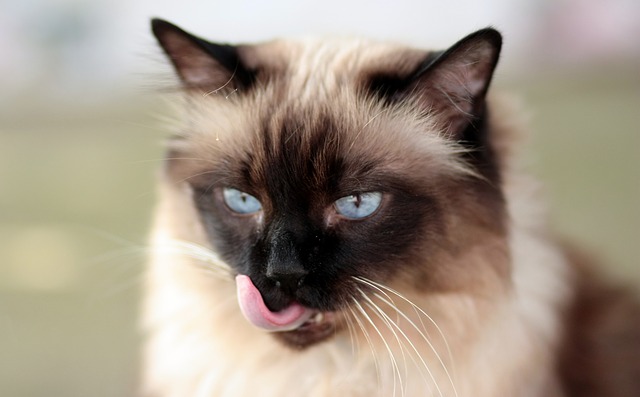Welcome to our third – and final – post in the series about 7 common cat traits!
If you missed the earlier posts of our “7 Common Cat Traits” series, here they are:
Part One: December 30 Covering:
- The 7 Common Cat Traits & their Importance
- How Traits Define a Cat’s Needs
- The Feline’s 2 Behavioral Traits: Excessive Grooming & Litterbox Issues
Part Two: January 10 Covering the Cat Traits of:
- Activity & Playfulness
- Fearfulness
- Aggression Towards Humans
Next, let’s look at the remaining 2 feline personality traits:
- Sociability towards humans,
- Sociability towards cats, and
discuss which specific cat breeds are most prone to these two traits.
1. Cat Traits: Sociability towards Humans

While many cats act standoffish with humans, 10 feline breeds are known to be the friendliest!
According to Pumpkin Pet Insurance, these social feline breeds are the:
- Maine Coon
Nicknamed “America’s Cat” and the gentle giants of the felines. They love other cats, people, children and dogs. - Siamese
Known as the “people’s cat” according to the Cat Fanciers’ Association. Inquisitive and loving. - Abyssinian
Sometimes called The Aby, loves family, social and loyal although they don’t like to be lap cats. - Ragdoll
Loves small spaces, adults and children and other cats and dogs. - Sphynx
Outgoing with adults, children, pets and dogs. Love to be the center of attention!
(Click on the link above for the other five breeds with social cat traits!)

While these feline breeds are known to be friendly and social, remember, each cat is different with its own unique preferences!
Talk to an expert about a specific cat before adoption to make sure they are a good match when it comes to their social tendencies!
“Male cats are often more friendly than female cats,” says Susan Saffron, Founder of the National Association of Pet Rescue Professionals.
2. Cat Traits: Sociability towards Cats
Finally, let’s look at the best breeds that get along with other cats!

CAUTION: Not all cats will socialize with other cats.
If you have your heart set on a multi-feline household, look for breeds that are social, even-tempered, non-territorial and adaptable.
According to Vicki Jo Harrison, the president of the International Cat Association, the best breeds for a multi-cat home include 20 breeds:
- Abyssinian.
- Bengal.
- Birman.
- Bombay.
- British Shorthair.
(Click on the link above for the other 15 best cats for a multi-cat home!)
Read the entire research paper from the University of Helsinki here!
“Reliability and Validity of Seven Feline Behavior and Personality Traits.”
We hope you’ve enjoyed this in-depth look at the common cat traits!

A Final Reminder about Cat Traits!
Remember, before adopting a new kitten or cat, consider the feline’s breed and associated traits (breed-related genetics). Make sure you are truly willing to live with those traits throughout your cat’s life.
Benjamin & Lynette Hart, Experts in Animal Communication & Behavior

Enhance your bond and quality time
with your favorite feline with the
EquiGroomer EasyGroomer Tools!
Cats LOVE the EasyGroomer because the blade mimics a cat’s tongue!
Whether you want the individual cat grooming tool or the fun Cat Gift Bag, you can enhance quality one-on-one grooming time with your favorite feline!














